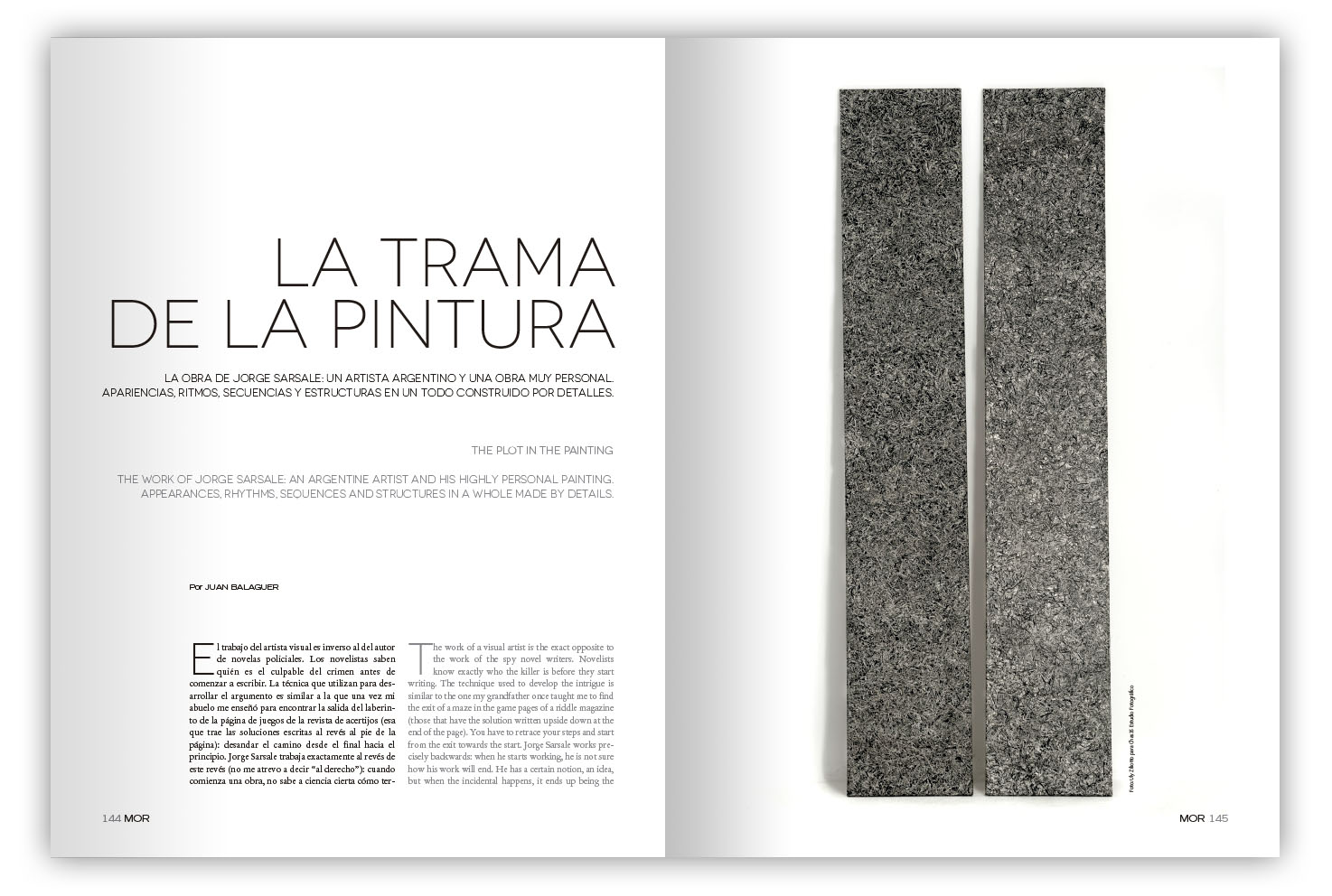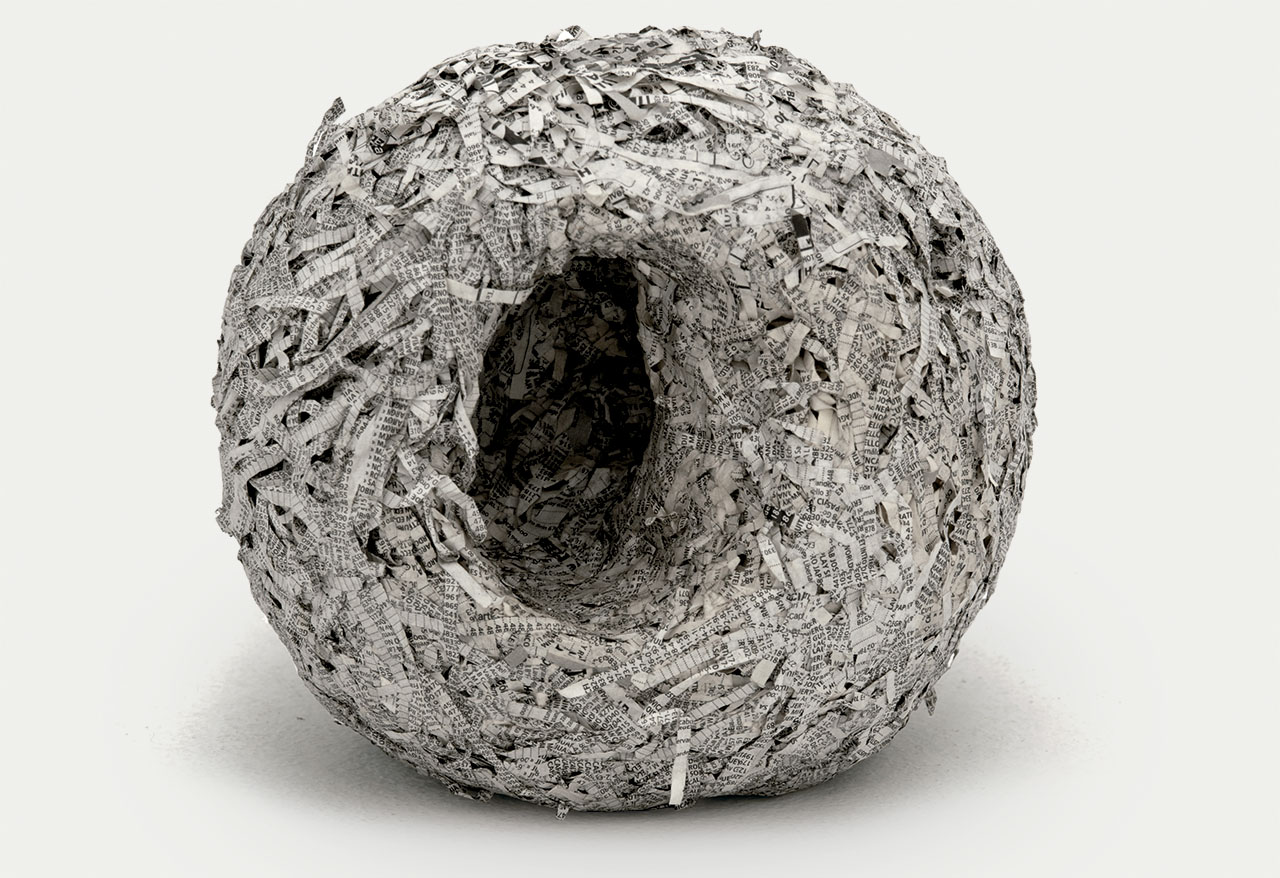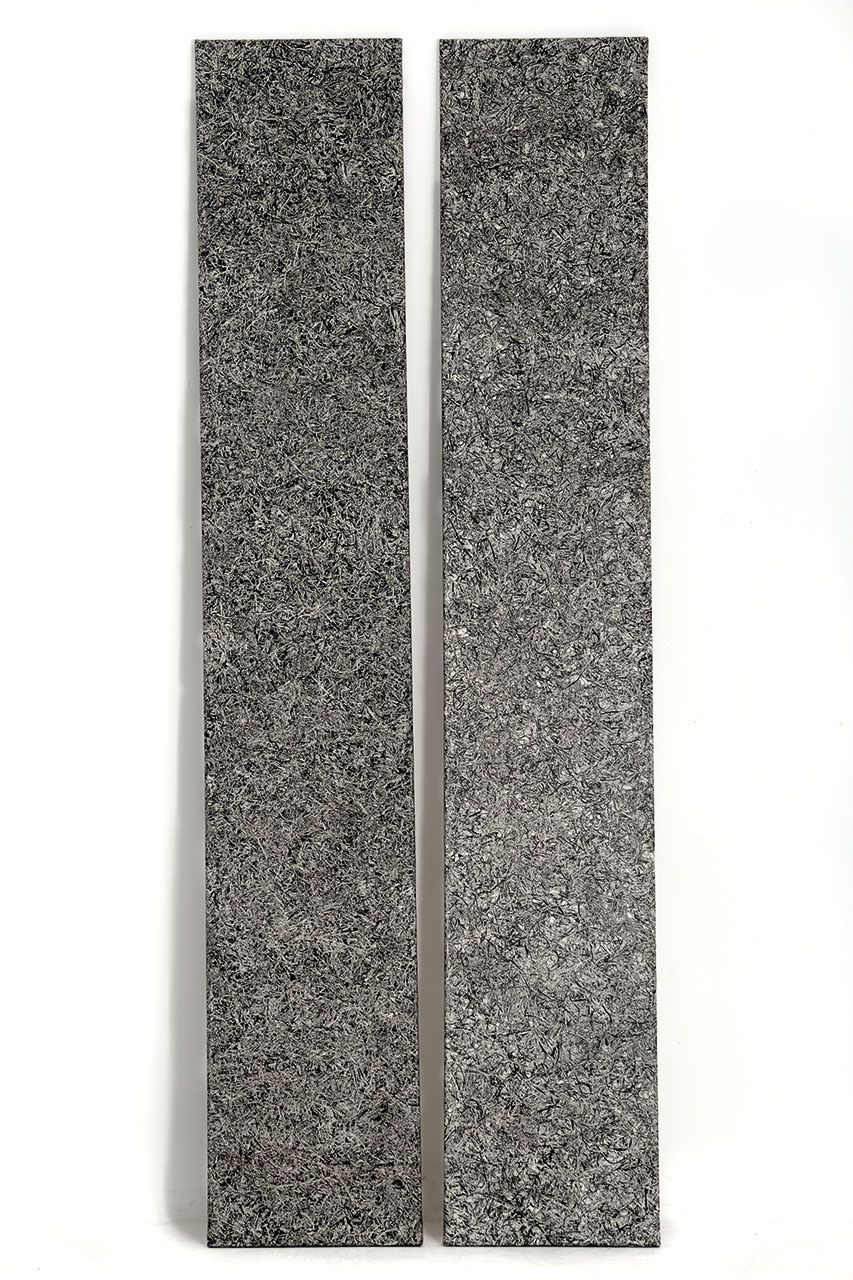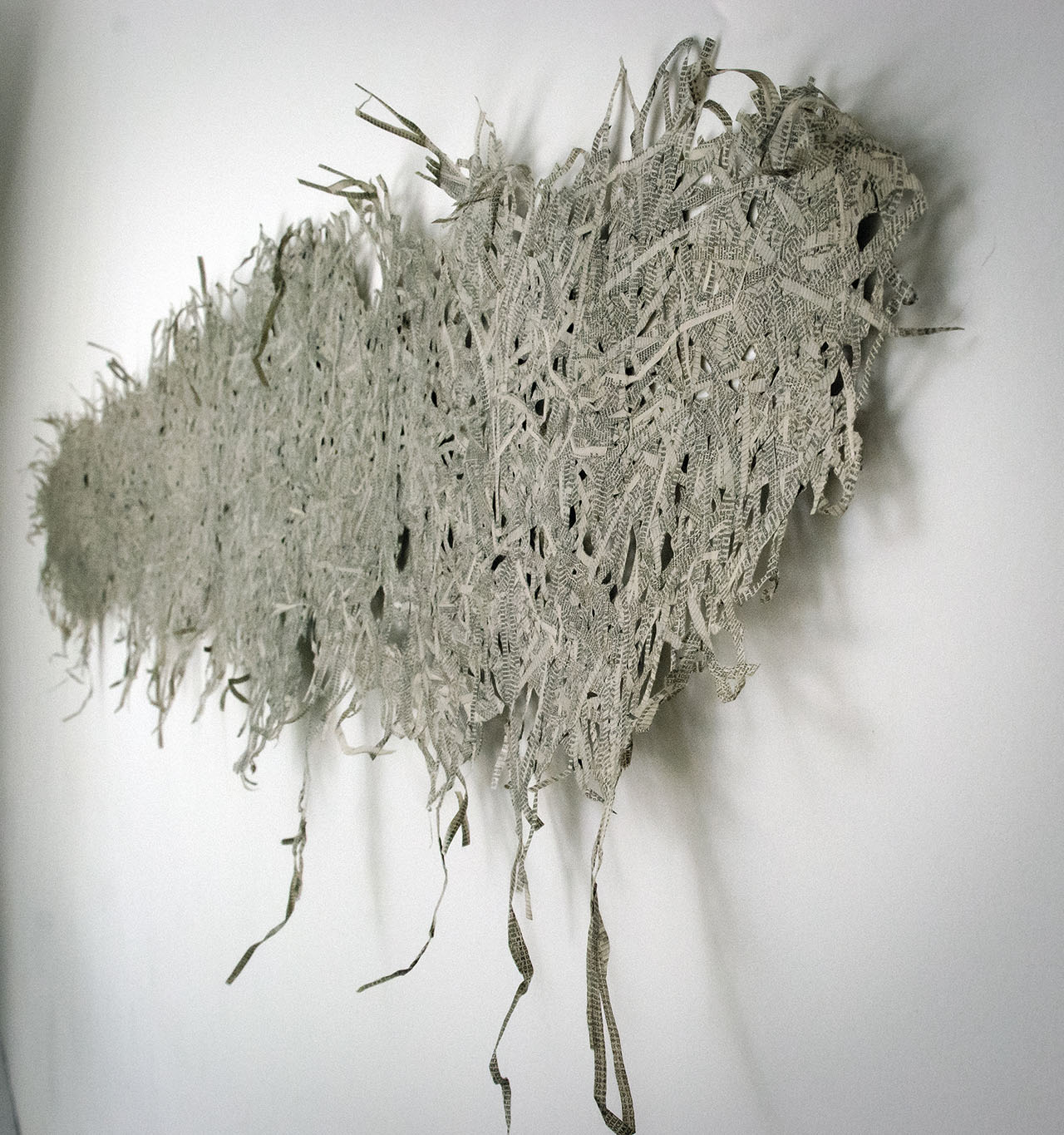Txt By Por Juan Balaguer
The plot in the painting
Article about the Argentine painter Jorge Sarsale, published in MOR Magazine number 10, december 2012

The work of Jorge Sarsale: an Argentine artist and his highly personal painting. Appearances, rhythms, sequences and structures in a whole made by details.
The work of a visual artist is the exact opposite to the work of the spy novel writers. Novelists know exactly who the killer is before they start writing. The technique used to develop the intrigue is similar to the one my grandfather once taught me to find the exit of a maze in the game pages of a riddle magazine (those that have the solution written upside down at the end of the page). You have to retrace your steps and start from the exit towards the start. Jorge Sarsale works precisely backwards: when he starts working, he is not sure how his work will end. He has a certain notion, an idea, but when the incidental happens, it ends up being the spirit of the work. When the audience sees it live they will most probably accept the unspoken invitation and give a closer look to every detail, every interstice and in every superposition trying to find out how it was made. The audience might fall into the temptation and work like a novelist, trying to rebuild the plot starting with that outcome –the work hanging on the wall– towards the beginning. And this is because the works of Sarsale are plots. Composition plots, formed by lines that cross and superpose one another made with different levels of distinguishable volume differences between the layers of materials in the work. There are also time plots, marked by the presence of visual rhythms, which often work as binary oppositions: full-empty, black-white, horizontal-vertical, all built on modulated repetitions of apparently similar patterns.
This impulse for reconstructing the pictorial work has a long history. Despite belonging to totally different universes, the work of Sarsale has the potential of generating the same question as much of the canonical painters work do. How does he do it? What in Caravaggio or Velázquez is, from a certain distance, a naturalistic photographical scene, with a closer look it is transformed in a shameless and evident painting. The prints of the paintbrush, the pressure made by the bristle on the soft materiality of the oil painting, the artist’s gesture is intentionally present in a surface which, from the distance, fooled us disguised as reality. Whereas in the work of Sarsale the surprise is given by the opposite discovery. What in the distance appears to be a well constructed painting, on a closer look it reveals the enigma of its materiality; it is not a painting, it’s made of paper. But the revelation, far from clarifying the question, boosts it up: how does he do it?
I’ve known Sarsale for many years now (seven, to be accurate) and in the consecutive visits I have paid to his workshop I have often asked him to describe his production process. Even today I cannot retrace the steps that make that personal technique that he has been elaborating and keeps changing, based on trial and error system. The artist’s essence is sustained, in the end, by long hours of work. Since they arrive to his workshop and are extended in the stretcher’s surface, the paper sheets (colored, white, black, with different densities and textures) undergo various cutting, folding, assembly, superposition and varnishing processes. Sometimes this apparently standardized process, almost Fordesque, results in a work that represents that structure. Some other times, like Alexander Fleming when discovering the penicillin, the discovery emerges and the process is twisted, interrupted, and assumes forms that open a new road, altering the rhythm. There are times when the paper is not leveled in two dimensions, but it inhabits the space instead, like in the “Eso” series -a mutable and carefully disposition of paper rolls built on a wall. There are times when these paper surfaces are transformed into the skin of functional objects like tables or chairs, or are made as housing metaphors, in the “Nidos” (Nests) series for example, in which he constructs baker nests.


All these works awake ambiguous sensations, which, because of its aesthetical quality, may be tranquilizing at first but at the same time are invitations to explore their details, their niches, and generate a discovery with every new look.
His latest production provides, in that second look, new and determinant findings. In his research for new materials with different types of papers, Sarsale found an idea that adds one more plot to the work: the metaphorical plot, the conceptual plot. In these new works, Sarsale knits his visual mazes with papers extracted from phone books or newspaper obituaries. He does to these papers the same thing he does to white papers: he fragments and superposes them. Hundreds of names and addresses appear mounted on each other. A so untidily well organized plot of people is now building on the surface of the work of art a universe of new meanings. In his own words: “My work with printed paper changed the meaning of my speech. Starting with those works, the work itself, for me, is made more explicit. It shows what to me is the core of my work: what lies behind, what has no visibility, what, because it is so present or so overexposed, cannot be registered.”
That which awakened visual reminiscences with writing or codes with its rhythms and its repetitions, or the elements that in its lineal composition –I’m thinking in his installation “That”– had a more implicit relationship with the visual category in writing, is now writing itself. The art critic Fabián Lebenglik pointed out on a review about this new work published in the newspaper Página/12: “There is writing, a certain syntax, a relationship between real time and virtual movement. And that writing is also microscopically inscribed in the work because the paper sheets or the backs where those stripes are attached are made of phone book pages. And there, in alphabetical order, names, streets and numbers are displayed. Then, with a closer look to the work, we notice, from the distance, that the army of insects that the work seems to attract is actually made of alphabetical listings. And that is when the first and material metaphor arises.”


The ability to systemize events and objects is a source of tranquility for the human kind. Everything that can be catalogued is controllable, when we put a name on it and fits a predetermined box, finds its place in the system, we dominate it. Sarsale’s work, when first looked at, appears to be constructivist, decorative, and doesn’t present enigmas. But when analyzed with more detail, the peace that this classification offers is disturbed. The feeling is that if you can sharpen your hearing in the middle of the musical silence of this precise composition, a disturbing whisper can be heard. A closer look may reveal that the right angle of the work is deceitful, that the angles are disguised as right angles but allow a chance to twist them. A methodical construction procedure with a margin of uncontrollable nature within its own system that introduces the sensitivity of what the artist does not control and, in Sarsale’s case, does not intend to control. In a 2004 text, Elena Nieves says: “In a first approach, the apparent monotonous rhythm, after the eye accommodates, starts to manifest its irregularity by means of delicacies, of small size ruptures, of superposition, of direction changes, of adjusted chromatic variations. He handles the essential without stridencies.” A failed Creator who turns the “error” into a virtue.


The discussion settled years ago on the limits of the “painting” category is constantly renewed in Sarsale’s work. A painter that paints without preparing colors, without using paintbrushes, and, in the end, without paint. The pictorial quality of his work leaves no doubts: despite not being “painted”, it is a painting. When talking to him, the subject is not even mentioned but his speech leaves no doubts, as he has no doubts of his own. He sees himself as a painter and his work as paintings. Once again, he is moving in the margin of taxonomies, of cataloguing. This is not because of an avant-garde rebelliousness; he is not trying to break apart from anything –in the XXI Century there is not much left to break apart from– he is not interested in controversy. He produces silently. Far from the raucous yell, the artist builds himself in accordance with his production: a meticulous, obsessive, job; a plot that is being knit with patience, in which every module fits and completes the previous plot, and in which the open and permanent research goes beyond the method that sustains it. A plot that adds another plot, and keeps making the road to a work of art.
More about Jorge Sarsale: www.jorgesarsale.com
La trama de la pintura
Texto acerca de la obra del pintor argentino Jorge Sarsale escrito por Juan Balaguer, publicado en la revista MOR, núm. 10, diciembre 2012

La obra de Jorge Sarsale: un artista argentino y una obra muy personal. Apariencias, ritmos, secuencias y estructuras en un todo construido por detalles.
El trabajo del artista visual es inverso al del autor de novelas policiales. Los novelistas saben quién es el culpable del crimen antes de comenzar a escribir. La técnica que utilizan para desarrollar el argumento es similar a la que una vez mi abuelo me enseñó para encontrar la salida del laberinto de la página de juegos de la revista de acertijos (esa que trae las soluciones escritas al revés al pie de la página): desandar el camino desde el final hacia el principio. Jorge Sarsale trabaja exactamente al revés de este revés (no me atrevo a decir “al derecho”): cuando comienza una obra, no sabe a ciencia cierta cómo terminará. Tiene una noción, una idea, pero el lugar que cede al accidente termina siendo el espíritu mismo del cuadro final. El espectador, en cambio, al verlo en vivo, muy probablemente acepte la invitación tácita y detenga su mirada en cada detalle, en cada intersticio y en cada superposición intentando descubrir cómo está construida. Seguramente caerá en la tentación de trabajar, él sí, como el novelista e intente reconstruir una trama desde ese desenlace –la obra en la pared– hacia el inicio. Y es que las obras de Sarsale son eso: tramas. Tramas compositivas, formadas por líneas que se cruzan y superponen; tramas sensoriales, formadas por diferencias de volumen más o menos imperceptibles entre las capas materiales de la superficie del cuadro, y tramas temporales, marcadas por la presencia de los ritmos visuales –muchas veces oposiciones binarias: vacío-lleno, blanco-negro, horizontal-vertical– construidos en base a repeticiones moduladas de patrones aparentemente similares.


Este impulso por reconstruir el hecho pictórico es bien antiguo. Pese a pertenecer a universos completamente diferentes, los cuadros de Sarsale tienen el potencial de generar la misma pregunta que la obra de muchos pintores canónicos: ¿cómo lo hizo? Lo que en Caravaggio o Velázquez es a la distancia una escena de naturalismo fotográfico se transforma ante la mirada cercana en la más descarada y evidente pintura. La huella del pincel, la presión de las cerdas sobre la blanda materialidad del óleo, el gesto del artista, está intencionadamente presente en una superficie que, a la lejanía, nos engañó disfrazándose de realidad. En la obra de Sarsale, en cambio, la sorpresa está dada por el descubrimiento opuesto: lo que a la distancia se percibe como una pintura de fina construcción, de cerca nos revela el enigma de su materialidad: no se trata de pintura, está realizada con papel. Pero la revelación, lejos de aclarar algo, no hace más que potenciar el dilema: ¿cómo lo hace?
Conozco a Jorge Sarsale desde hace ya varios años (siete, para ser preciso) y en sucesivas visitas a su taller le pedí que me describa su proceso de producción. Hasta el día de hoy no termino de reconstruir los pasos de una técnica personal que él mismo fue elaborando y que sigue cambiando, basada en el sistema del ensayo y el error. Sostenida, al fin y al cabo, en las horas de trabajo, la esencia del artista. Desde que llegan a su taller hasta que se depositan sobre la superficie del bastidor, las hojas de papel (de colores, blancas, negras, de distintas densidades y texturas) son sometidas a varios procesos de corte, pegado, ensamblaje, superposición y barnizado. A veces, este proceso en apariencia completamente estandarizado, un método casi fordista, resulta en una obra que representa esta estructuración; otras veces, como le sucedió a Alexander Fleming con la penicilina, brota el descubrimiento y el proceso se tuerce, se interrumpe y asume otras formas que abren un nuevo camino que altera el ritmo. A veces el papel no se deposita en una tela ni se aplana en dos dimensiones, sino que vive en el espacio, como en la serie “Eso” –una mutable disposición en la pared de bollos de papel cuidadosamente construidos–, otras veces sus superficies de papel se convierten en la piel de objetos funcionales, como sillas o mesas, o construyen metáforas habitacionales, como en la serie “nidos”, en la que fabrica nidos de hornero.
Todas son obras que despiertan sensaciones ambiguas, que en principio tranquilizan por su calidad estética, pero que a la vez, lejos de pasarlos por alto, invitan a detenerse en sus detalles, en sus nichos, y generan descubrimientos en cada nueva mirada.
Su producción más reciente depara en esa segunda mirada nuevos y determinantes hallazgos. En su búsqueda material con diversos papeles, Sarsale se encontró con una idea que agrega una trama más. La trama metafórica, la trama conceptual. En estas nuevas obras, Sarsale teje sus laberintos visuales con papeles extraídos de listados telefónicos o de obituarios de los diarios. Al igual que con los papeles en blanco, los fragmenta y superpone. Centenares de nombres y direcciones aparecen montados unos sobre otros. Una trama desordenadamente ordenada de personas construye ahora en la superficie de los cuadros un nuevo universo de significados. Como él mismo nos dice: “mi trabajo con el papel impreso cambió en un sentido mi discurso. A partir de estos trabajos la obra se hace, para mí, mas explícita. Se pone en evidencia lo que para mí es el núcleo de mi trabajo: lo que esta detrás, lo que no tiene visibilidad, lo que, de tan presente o sobreexpuesto, no se registra.”
Aquello que en sus ritmos y repeticiones binarias despertaba reminiscencias visuales con la escritura o con los códigos, o aquello que en su composición lineal horizontal –pienso, por ejemplo, en su instalación “Eso”– tenía una relación tácita con la categoría visual de la escritura, ahora se convierten en escritura misma. El crítico Fabián Lebenglik señaló en una nota publicada por el diario Página/12 sobre esta nueva obra: “Allí hay una escritura, una sintaxis, una relación entre tiempo real y movimiento virtual. Y esa escritura también está inscripta microscópicamente en la obra, porque las tiritas de papel o los fondos sobre los que se aplican las tiras a veces están conformados por páginas de la guía telefónica. Y allí se suceden nombres en orden alfabético, números, calles. Entonces, cuando nos acercamos, advertimos que los ejércitos de insectos que de lejos parece convocar esta obra, están hechos de listados alfabéticos. Aquí aparece la primera y material metáfora de sus trabajos.”


La capacidad de sistematizar sucesos y objetos es fuente de tranquilidad para la especie humana. Todo lo catalogable es controlable, lo nombramos y ya entra en un cajón predeterminado, encuentra su lugar en un sistema, lo dominamos. La obra de Sarsale invita a ser adjetivada como constructivista al primer vistazo, es decorativa, no presenta grandes enigmas. Sin embargo, la paz que esta rápida clasificación puede entregar se ve perturbada cuando se la analiza con mayor detalle. La sensación es que si uno agudiza el oído puede llegar a escuchar, en medio del silencio musical de la composición precisa, un susurro inquietante. Una mirada más atenta descubre que la ortogonalidad de la obra es engañosa, que los ángulos se disfrazan de rectos pero se dejan torcer por el azar. Un metódico procedimiento de construcción que en su propio sistema tiene un margen de ingobernabilidad que introduce la sensibilidad de aquello que el artista no domina, y que en el caso de Sarsale no pretende dominar. Como dice la pintora Elena Nieves en un texto de 2004 publicado en el sitio www.jorgesarsale.com “En una primera aproximación, el aparente ritmo monótono, después de la acomodación de la mirada, comienza a manifestar su irregularidad por medio de sutilezas, de pequeños quiebres de tamaño, de superposiciones, de cambios de dirección, de ajustadas variaciones cromáticas. Maneja lo indispensable sin estridencias.” Una especie de demiurgo fracasado, que sin embargo hace del “error” su propia virtud.
La discusión, zanjada hace varios años ya, sobre los límites de la categoría “pintura” es constantemente reactivada por la obra de Sarsale. Un pintor que pinta sin preparar colores, sin ensuciar pinceles, al fin y al cabo, sin pintura. La cualidad pictórica de su obra no deja dudas: pese a no ser “pintada”, es pintura. Cuando uno conversa con él, el tema ni se toca, su discurso no deja margen a la duda, porque él mismo no duda. Se ve a sí mismo como pintor y a sus obras como pinturas. Una vez más, se mueve al margen de las taxonomías, de las catalogaciones. Pero no por rebeldía vanguardista, no intenta romper con nada –entrados ya en el siglo XXI queda poco por romper–, no le interesa la polémica. La suya es una producción silenciosa. Lejos del grito estridente, el artista se construye en consonancia con lo que produce: una tarea meticulosa, obsesiva, una trama que se va tejiendo con paciencia, en la que cada módulo encaja y complementa al anterior, y en la que la búsqueda abierta y permanente supera al propio método constructivo que la sustenta. Una trama que suma nuevas tramas y que sigue construyendo el camino de una obra.
Para conocer más de Jorge Sarsale: www.jorgesarsale.com
